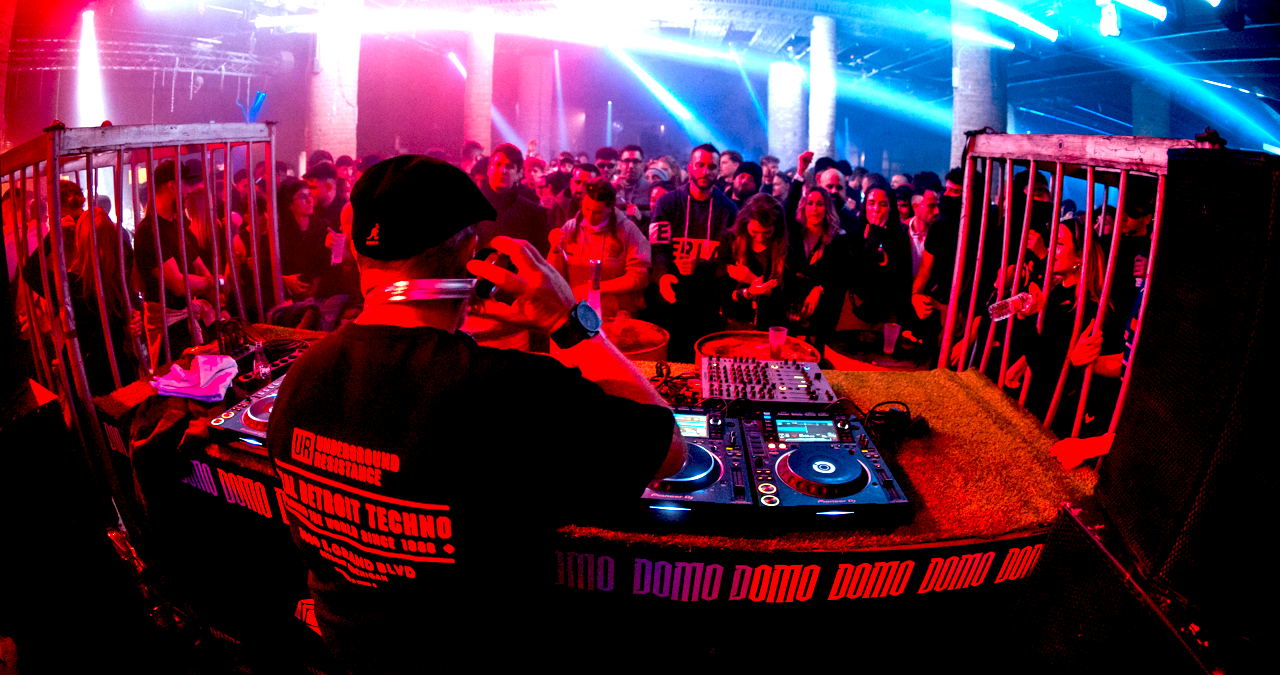
If you like your techno to have some feel, then you’ll have instinctively sought out the funkier end of the genre and no doubt stumbled on classic tunes that now define the hardgroove genre.
Rooted in the melting pot of 90s dance music culture, it’s no surprise this uplifting but banging genre has seen a resurgence. And with tempos now hitting 140bpm and beyond, it’s tougher and faster than ever.
If you've already read our useful primer, you'll know that it's got its fair share of classic sounds such as rave synths and cut up vocals, but keeps things sparse, steering well clear of other popular uptempo genres such as trance.
Nevertheless, underpinning all quality hardgroove tracks is a loopy, funky rhythm track, and getting this right is absolutely vital if you want your hardgroove track to translate.
In this tutorial we’ll take a look at the building blocks you’ll need and sounds that work to create a credible hardgroove beat.
(To make images larger, right click and select 'Open Image in New Tab')
How to make a hard-hitting hardgroove beat
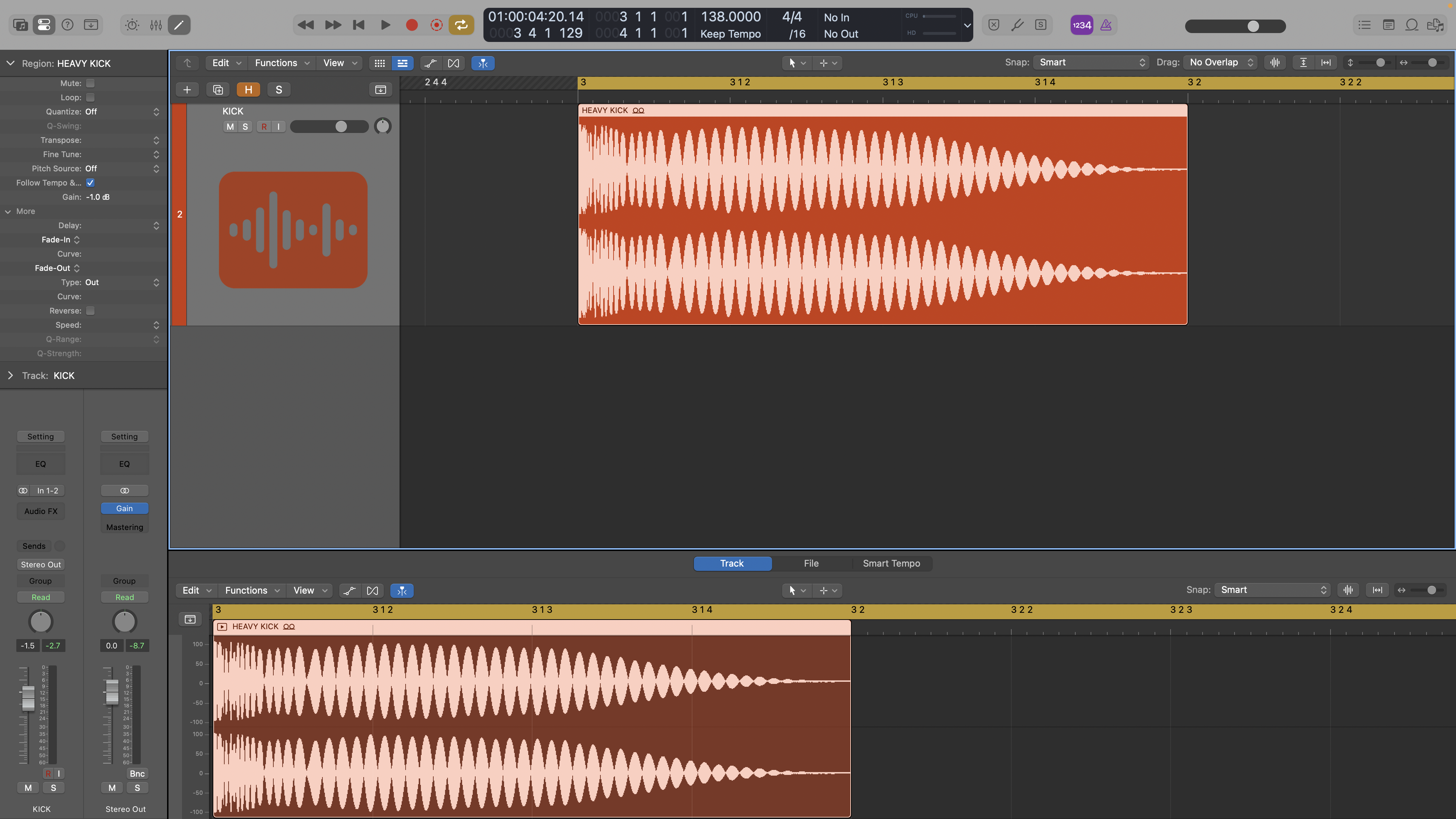
1. Let’s start our beat with the kick. This is a vital part of hardgroove and needs to be tough but also not too short. A straight up 909 kick is unlikely to fit the bill, although with some heavy processing it might suffice. We suggest seeking out tougher techno kick samples
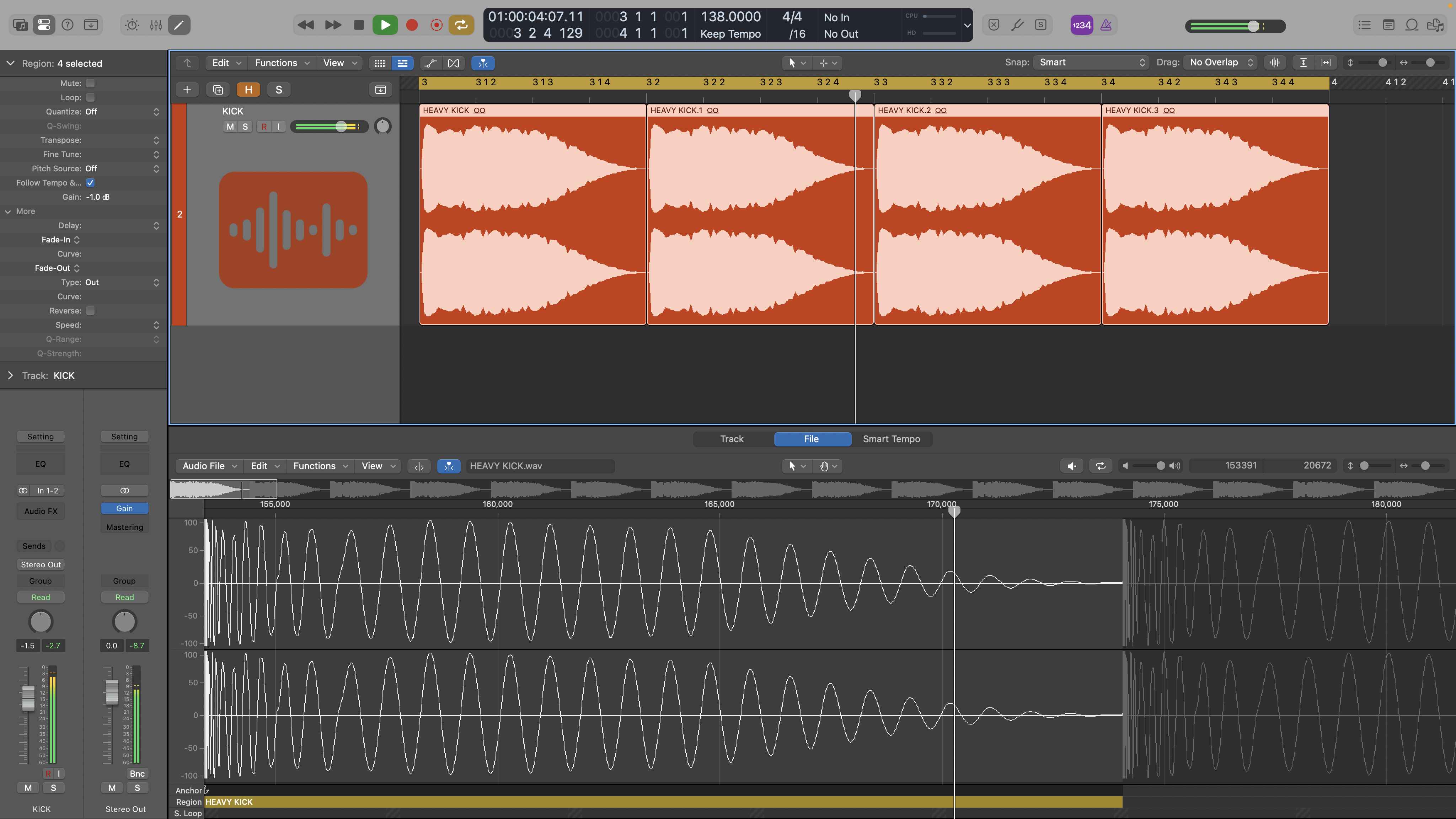
2. Here we’ve found a kick we like. It has some length and also a noticeable note pitch to it. Spending time sourcing the right sound makes it mix ready. Hardgroove beats are built around 1 or 2 bar loops, so to get started choose a tempo (ours is 138bpm) and program up or copy your kick to every quarter note for a one bar loop.
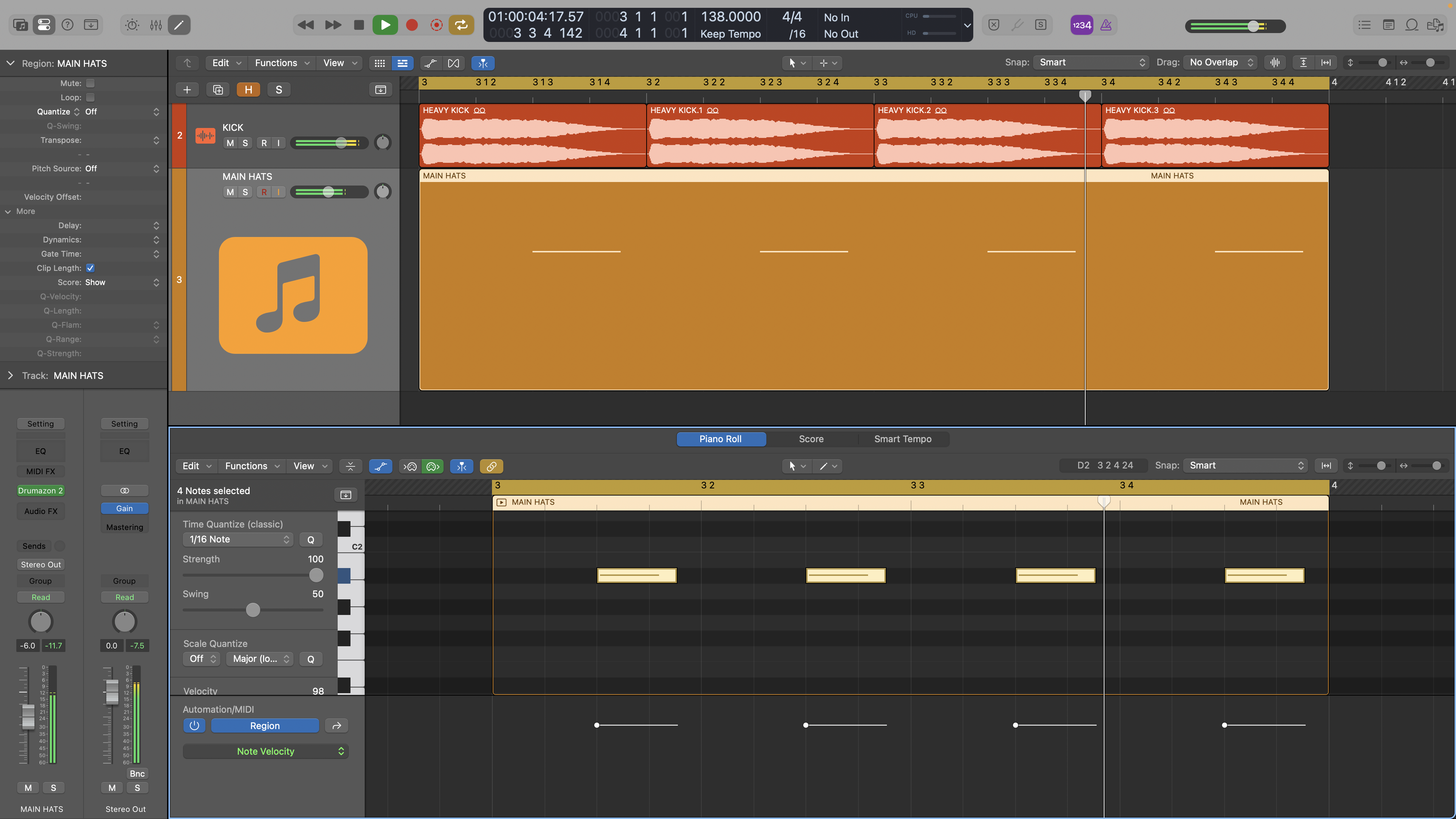
3. Next up, hi-hats. The main hi-hat plays a typical house style offbeat on the alternate 1/8ths to the kick. A loose 909 open hi-hat is ideal for this job and you can use a sample or a 909 software instrument, as we are doing here.
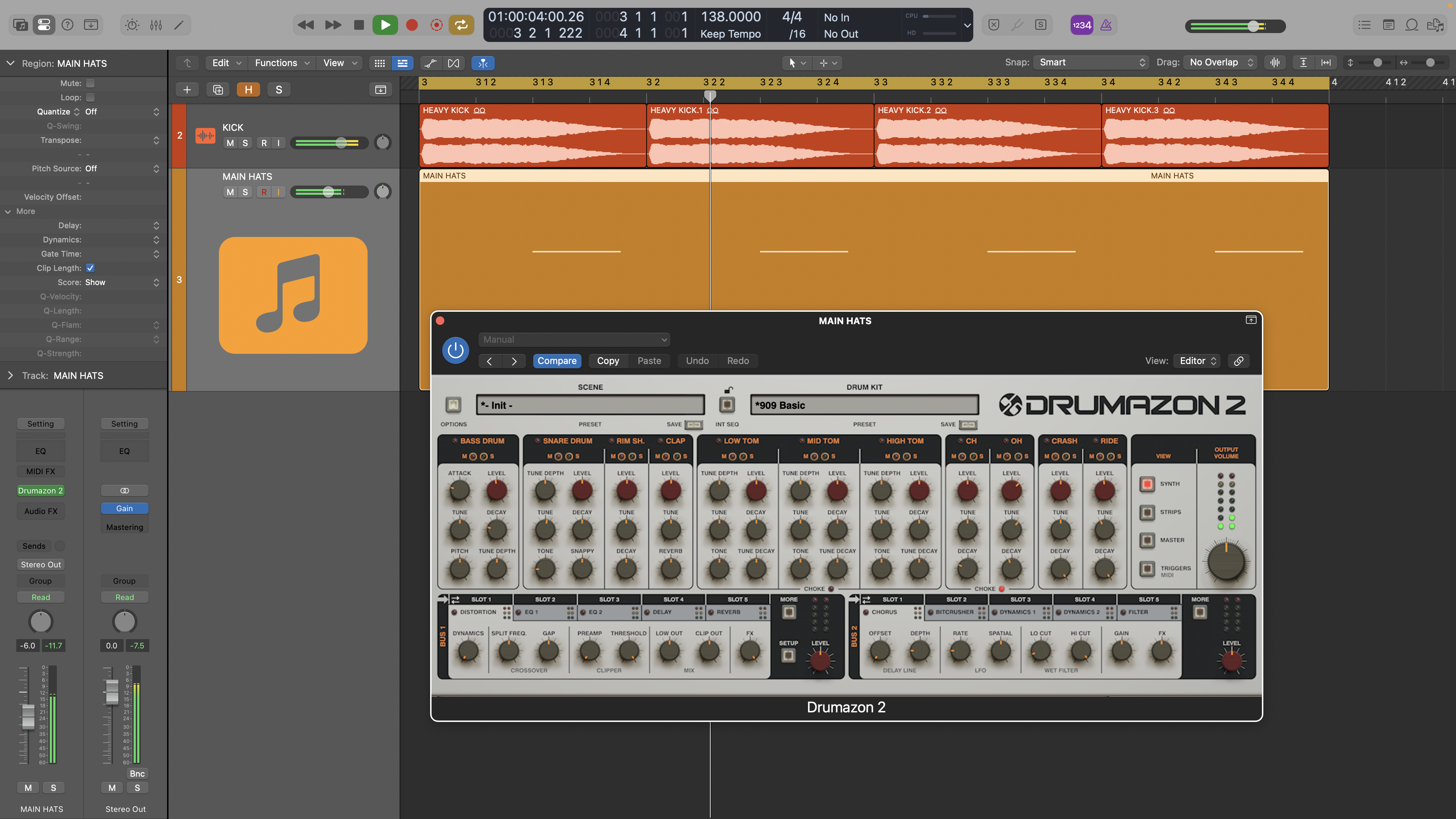
4. Although this is a typical 909 sound, be prepared to tweak the pitch, decay and overall EQ to make it fit and personalise your track. A software instrument provides a bit more flexibility, and here we have adjusted both tuning and decay parameters to fit with our kick.
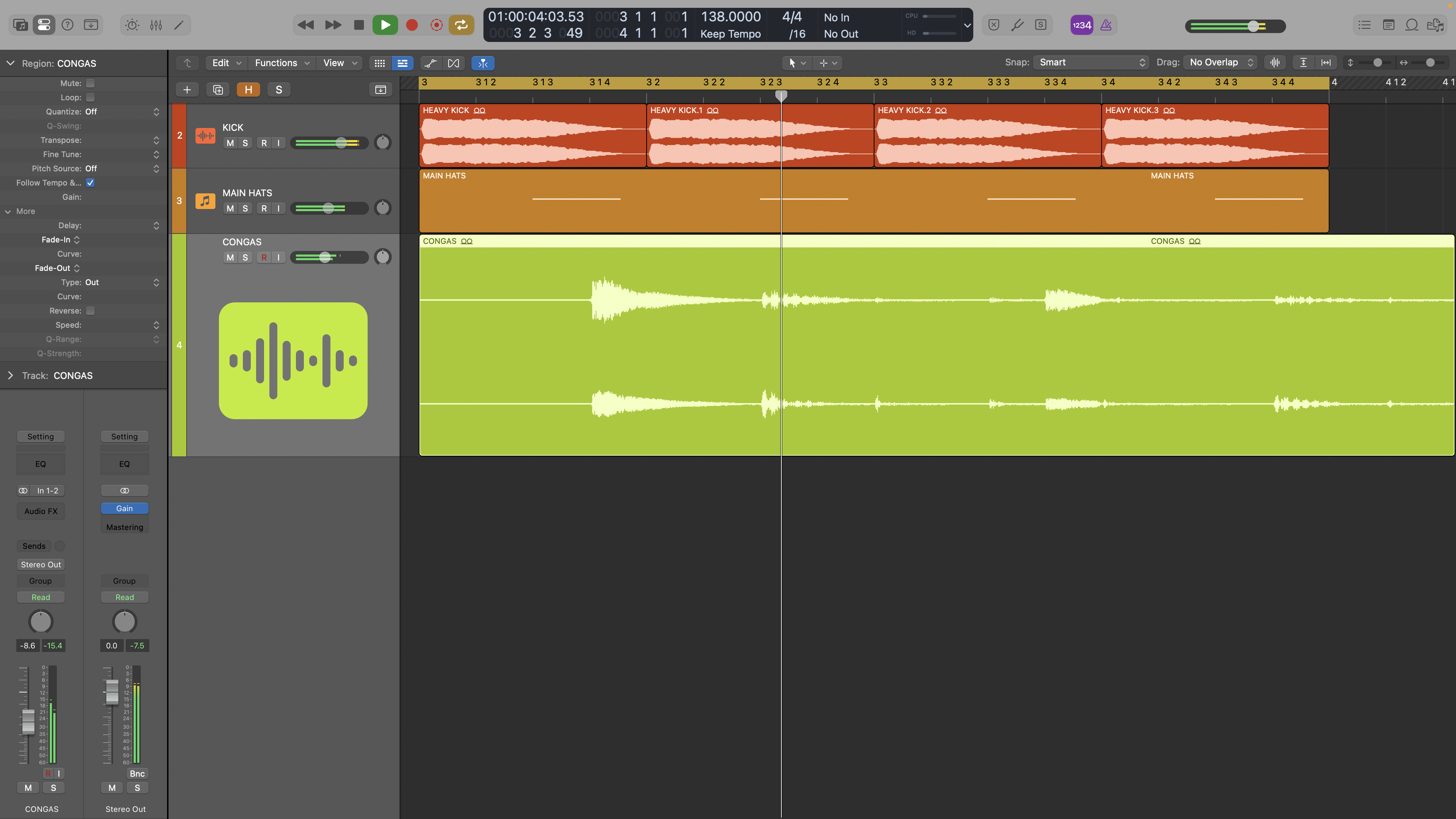
5. So far, although we’ve focused a bit on sourcing sounds, we’ve only got a basic beat that would suit any techno style. Next up, we need to make things funky and this is where the real fun begins. First up, we’re going to add a conga.
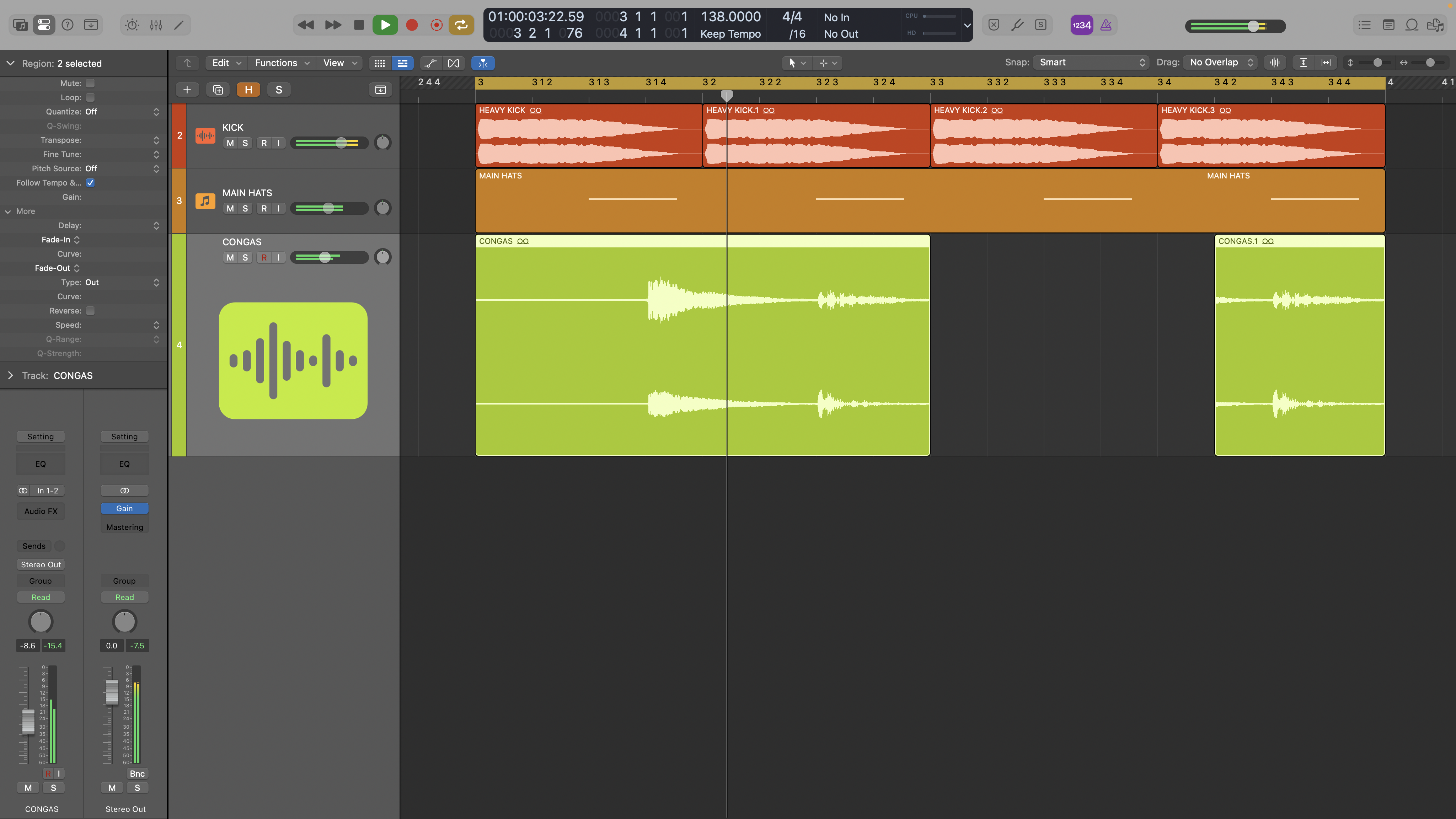
6. You can program this using an instrument or chop up a loop as we have done here. Either way, the pattern needs to be short - ours repeats every 2 quarter notes. Here we’ve also truncated the second section. Overall this begins to add groove to the core beat.
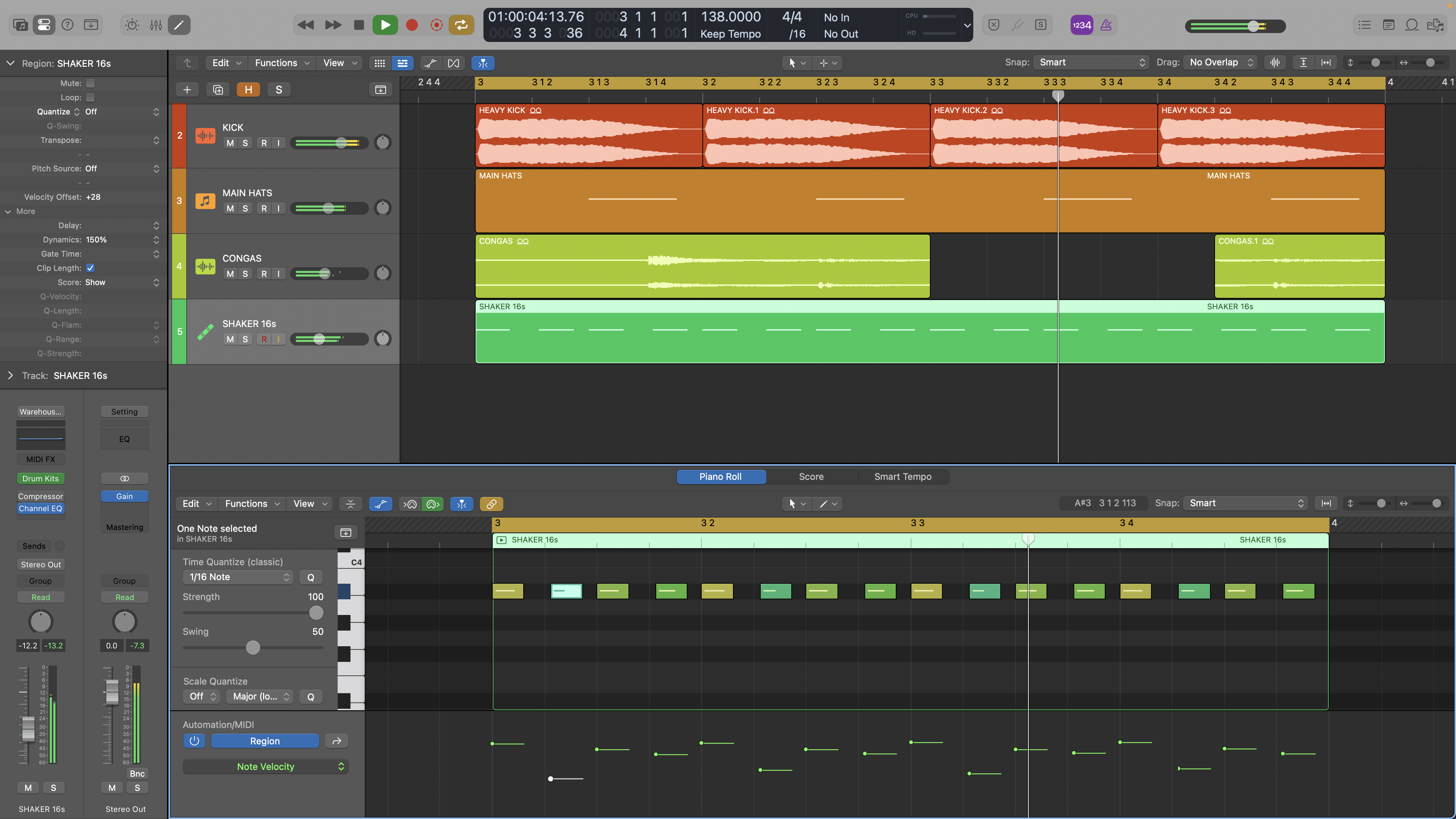
7. Now let’s add more feel with a shaker part. A sample loop often works well, or for more precision program up a basic 16ths MIDI part using a sampler instrument. Here we’ve done the latter using velocity and swing quantise (16ths), which you can see is shifting every other 16th.
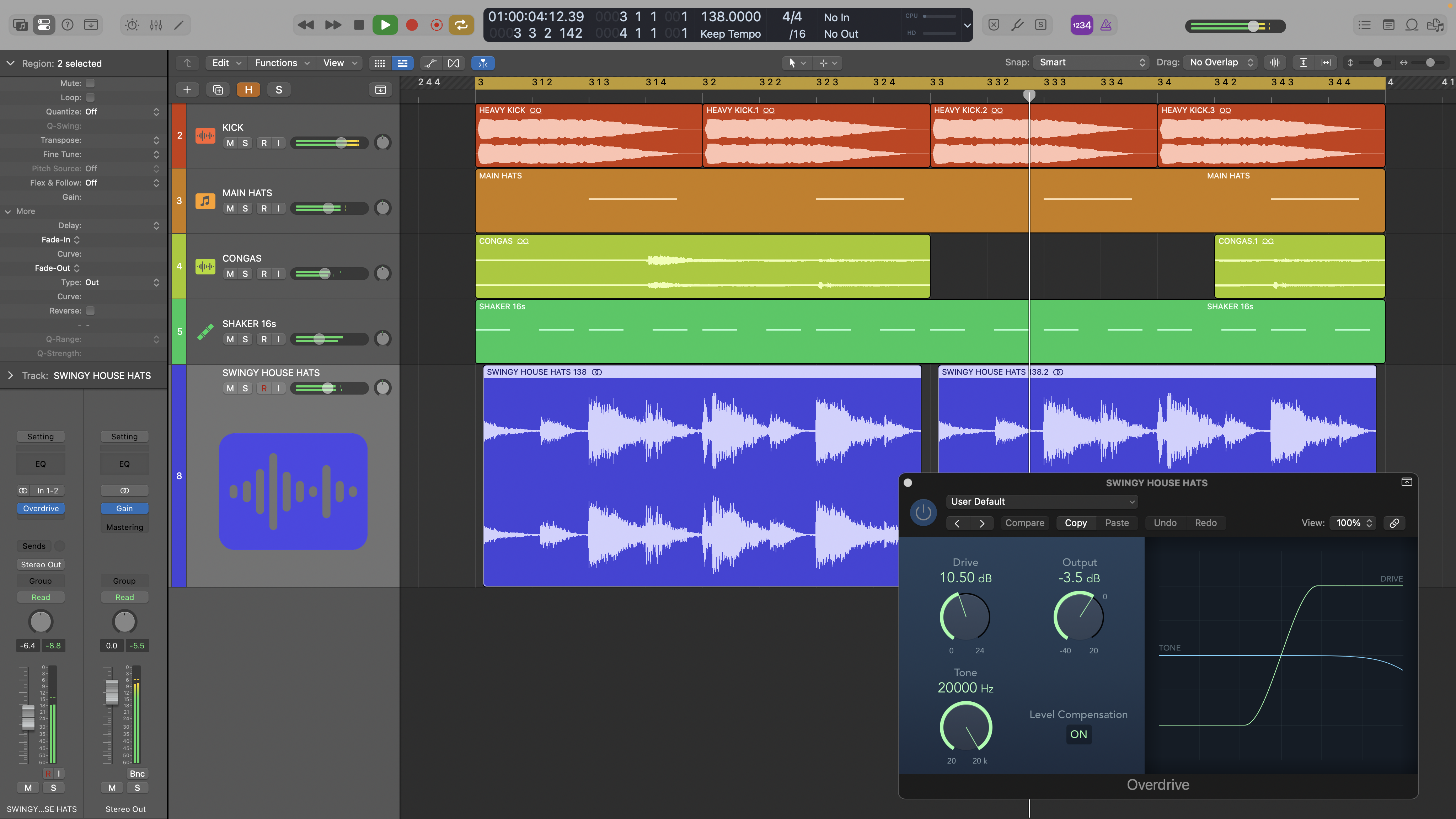
8. To get the crunchy feel associated with hardgroove, Latin house percussion loops work really well. However, these are typically too slow, so timestretch them to your tempo. You may also want to dirty them up a bit with some distortion.
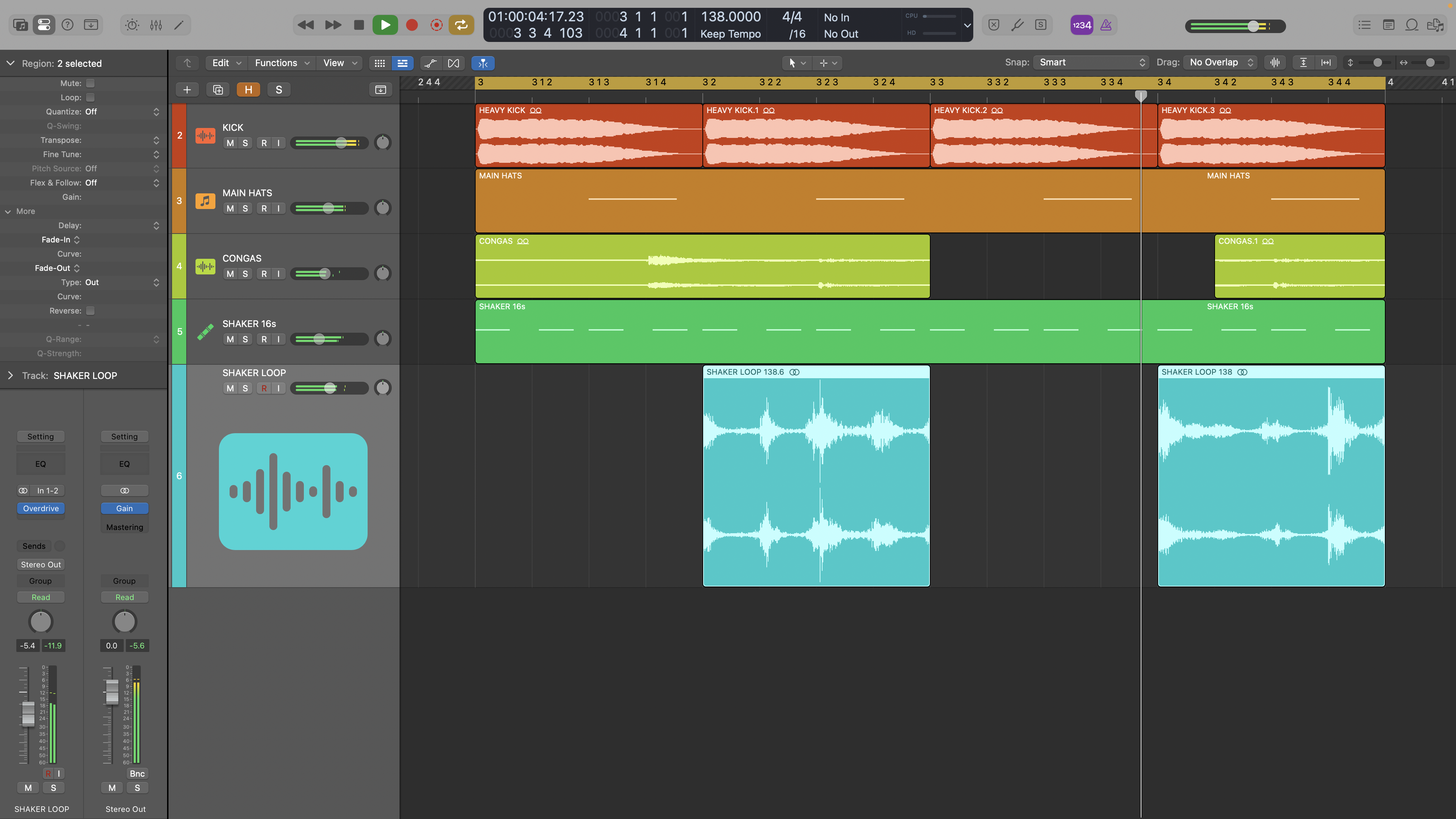
9. A regular house style loop will be too long, so chop out sections and repeat them across the bar to get the groove you want. Don’t be afraid to use short sections of different loops, or repeat or re-order the loops you have. Spend as long as it takes on this process, and balance the elements to get the right groove.
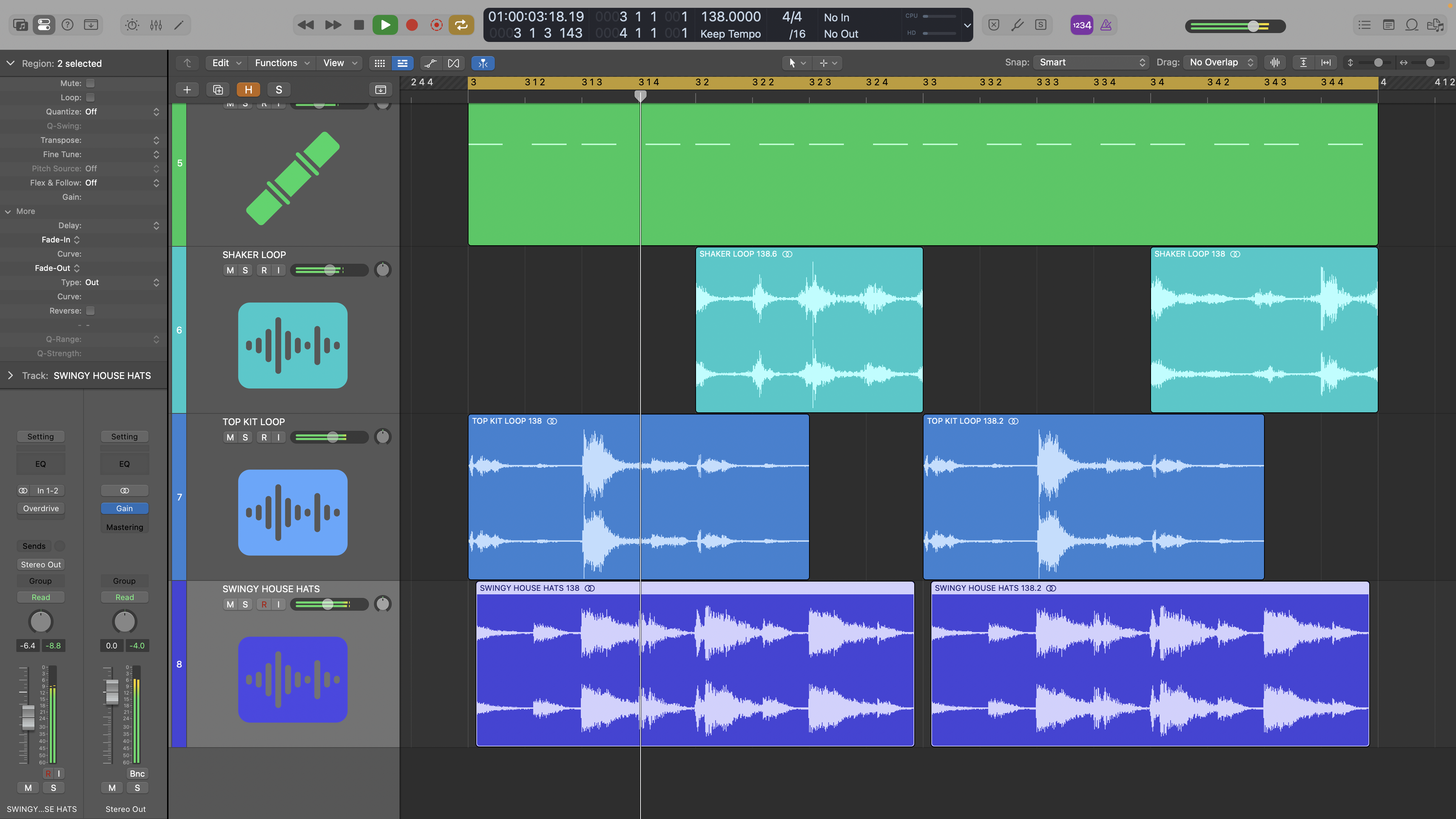
10. Here we’ve used 3 separate loops, two of which alternate to create a sort of call and response feel. The third loop repeats every 2 quarter notes - it also includes a backbeat clap. Overall this creates a hypnotic percussive layer that works with the tough kick and open 909 hats.
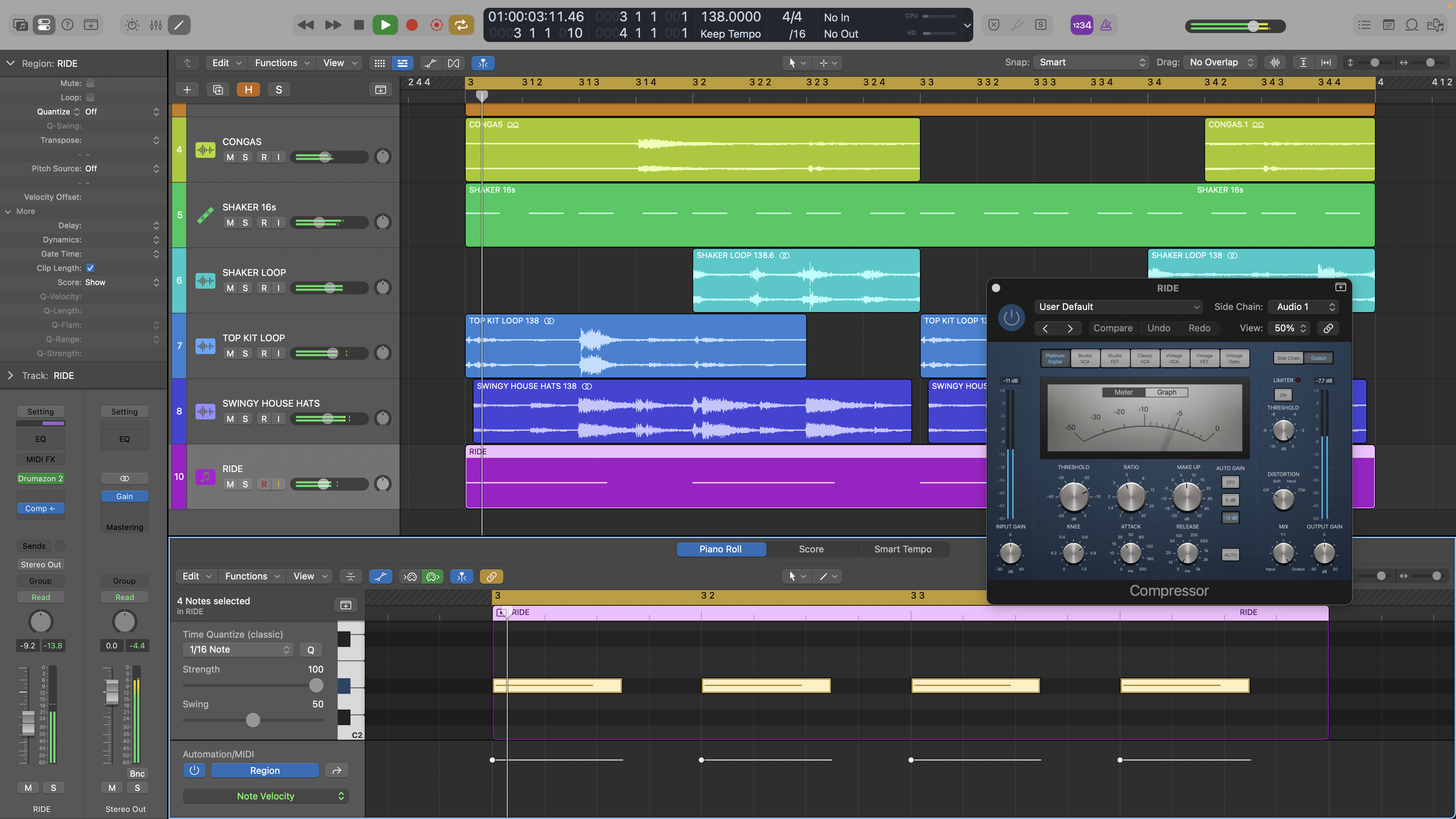
11. The final percussive element is a 909 ride. You can program this up to play 1/8ths or use quarter notes. Here we’ve used the latter option and then added a sidechain compressor. This is keyed by the main kick to add pump to the ride decay.
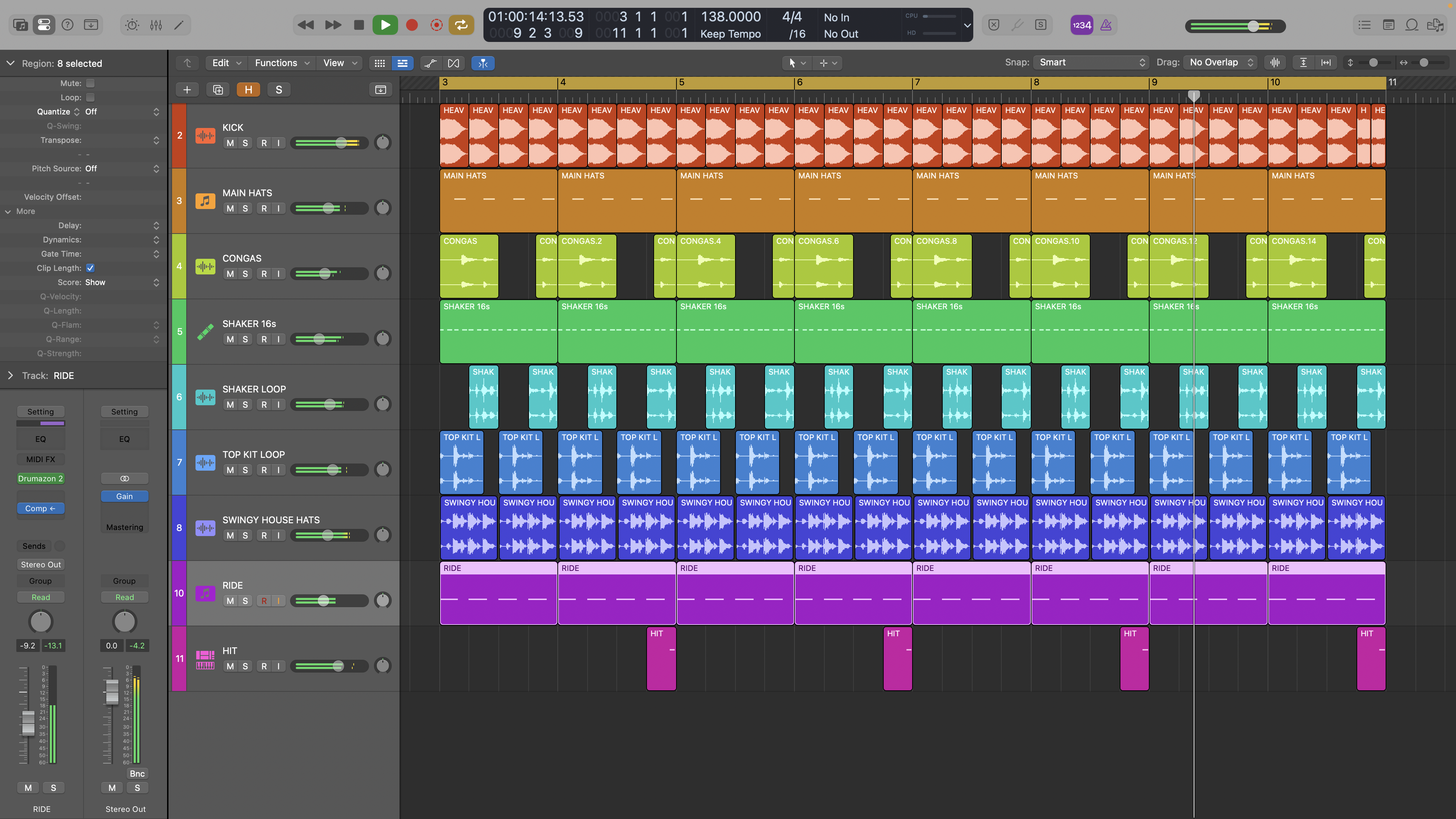
12. Finally, we can now work up the one bar loop across a longer section, adding some variation to taste. Here we’ve added a kick repeat at the end of every 8 bars, and also added in an extra tom hit every other bar. You can apply further tweaks as the rest of the production progresses.







